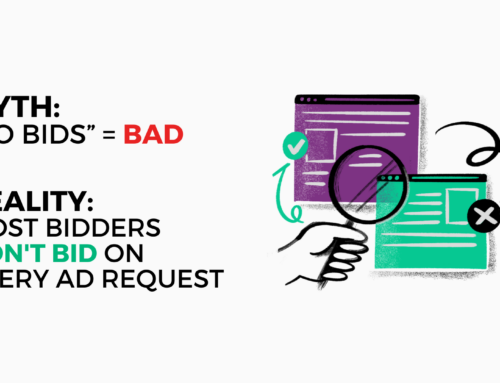Don’t know a CPM from a CMP? Wondering how an ad network is different from an ad server? Well, we’re not going to answer all of your burning terminology questions here, but we’ll tackle a handful in this article.
We’re always publishing subsequent articles to help explain the various terms that float around the digital media and ad technology space. Now without further ado, here’s our first batch of terms around ad serving to get you started – enjoy!
- Ads.txt specifies a mechanism for publishers to list their authorized digital sellers, in order to fight against fraud and misrepresented domains.
- Ad Blocker is a software tool that prevents ads from being displayed on a web page.
- Ad Exchange is an online marketplace where advertisers and publishers can buy and sell ad inventory through programmatic advertising.
- Ad Fraud is any deliberate activity that attempts to serve ads that have no potential to be viewed by a real person.
- Ad Inventory is the number of ad impressions available for sale on a publisher’s website or mobile app. In other words, these are the commodities available for the advertisers to buy on the website.
- Ad Price Floors are the lowest price that a publisher will sell their ad inventory for on the open exchange/marketplace. For instance, if a publisher sets their ad price floor at $1.25 CPM, it means that a publisher will not accept bids lower than $1.25 CPM for the ad unit(s) on their website/mobile app. Applying price floors is an advanced tactic that publishers will use to find the optimal price that advertisers are willing to pay. They also balance their price floor strategy with the coinciding fill rate for their ad inventory.
- Ad Requests are actions in which your website sends a request to your ad server to fill an ad unit with an advertisement. An ad request is made when a user starts loading your webpage/mobile app. The ad request action will happen for every ad unit on a specific webpage. Ad requests can be counted even if no ads were returned/delivered from your advertisers.
- Ad Servers help publishers gain better control over their ad inventory by giving them access to various features such as ad management, rotating creatives, direct selling of inventory, advanced reporting, and much more.
- Ad Tags are snippets of code generated from an ad server that allows for ad serving on web pages, or within mobile apps where ads need to display.
- Ad Unit is a term used to describe the advertisement space on a website/mobile app – IE a 300×250 ad unit. It’s widely used within Google’s range of advertising products such as Google Ad Manager, AdExchange and AdSense.
- Ad Unit ID is the unique ID that identifies a specific ad unit on a website or app.
- Cost-Per-Thousand Impressions (CPM)is the amount that an advertiser pays for every 1,000 ad impressions served on a web page.
- Demand-Side Platform (DSP) is a tool that advertisers use to buy and manage ad inventory across multiple ad exchanges and supply-side platforms (SSPs).
- Header Bidding is a technique that allows publishers to offer their ad inventory to multiple ad exchanges simultaneously before sending the ad request to their ad server.
- Key-Values are the ways to further segment the inventory on a web page or mobile app for reporting and targeting. If you are a sports website, you might use a key-value pair to differentiate between the type of sport you are writing about. Ex. “Sport=Football” would be a key-value where “Sport” is the key and “Football” is the value of that key. These pairs often match the taxonomy a publisher has in their CMS for the content they produce.
- Programmatic Advertising is the use of automated systems and algorithms to buy and sell ad inventory in real-time auctions.
- Real-Time Bidding (RTB) is a type of programmatic advertising in which ad inventory is bought and sold through real-time auctions.
- Supply-Side Platform (SSP) is a platform that publishers use to manage their ad inventory and sell it through ad exchanges and DSPs.
- Viewability is a metric that measures whether an ad is actually seen by a user on a web page.
We hope that was a useful first dive into ad tech terms. Be on the lookout for future articles where we’ll dive deeper into additional segments of the industry. Also, if you have any additional questions and would like to chat with someone at Freestar, please contact us here.





